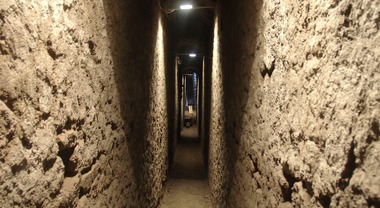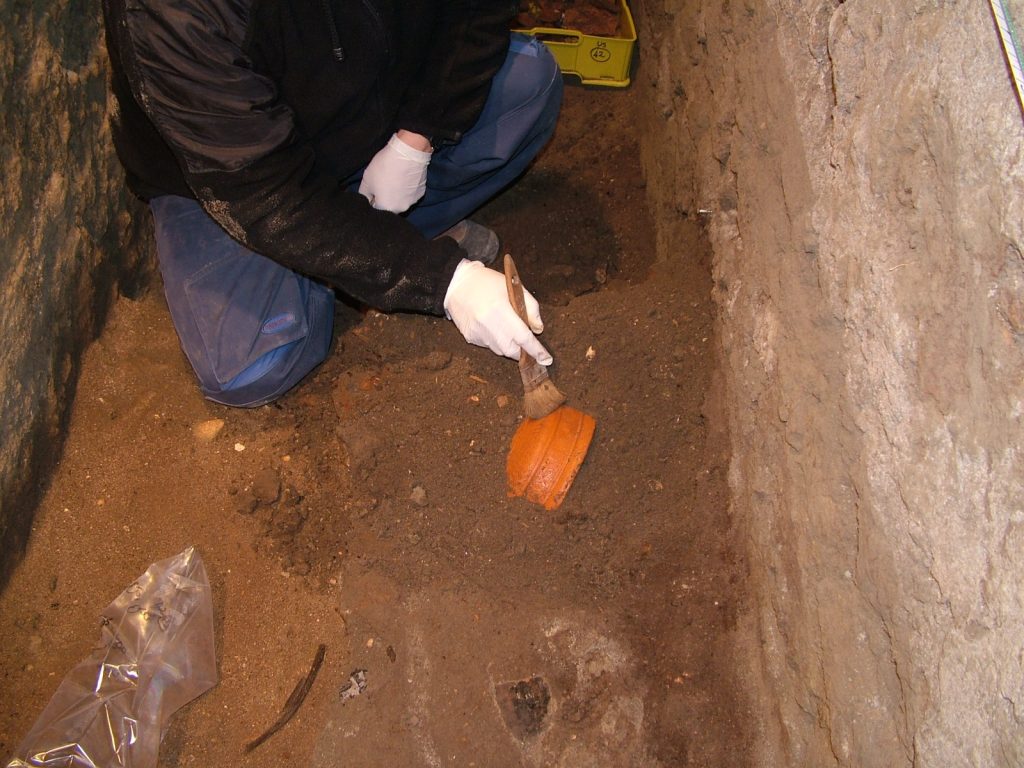
Next to the main sewage system, which runs through much of the streets of ancient Herculaneum, we find, in the Insula Orientalis II, a large septic tank (collector) over 85 meters long, 0.80 meters wide, with a height ranging from 2 to 3.5 meters.
The collector was used to gather the liquid and solid waste from the homes and shops of the building of the Palestra, which had three floors with kitchens and latrines always in the same position, connected to the collector through actual fecal columns made from terracotta tubes embedded in the thickness of the load-bearing walls. This septic tank does not have any connections to the sewage network and therefore had to be periodically cleaned of the material that accumulated inside.
Archaeological excavations of the residues inside at the time of the eruption in 79 AD have allowed the recovery of a significant quantity of terracotta tableware, lamps, and glass items, which, once broken, were thrown into the sewer through the drains.
700 bags of organic sediment were also collected, made up of human excrement and food remains thrown into the sewer from the kitchens.
Studies conducted on a sample of about 10% of the sediment allowed the identification of at least 94 plant species, as well as a rich fauna with various small mammals, 2 birds (a hen and a goose), 73 fish, and 31 types of mollusks. The archaeobotanical remains were found both carbonized and mineralized, albeit in very limited quantities. The carbonized material mainly consists of olive pits along with other fruit seeds (figs, apples, pears, blackberries), weed seeds, and nut shells. Nine types of herbs and spices were also identified: black pepper, dill, fennel, coriander, celery, mint, poppy, and flax.
In addition to these, numerous fragments of eggshells were recovered, the frequency of which reveals that eggs played an important role in the diet of the Herculaneans. The remains of fish fauna are also very abundant, including the bones of more than 50 fish species, almost all still present today in the Gulf of Naples and the Tyrrhenian Sea, such as white bream, gilthead bream, bream, sardine, anchovy, sole, conger eel, moray eel, mackerel, weever fish, scorpionfish, needlefish, and stingrays.
It was also understood that there were mainly small fish, which were more economical, as could be expected in a popular block of small apartments and shops like the one served by the septic tank.
Along with these, a variety of small objects were present that must have fallen or been accidentally thrown into the septic tank, such as game pieces, needles, pins, coins, rings, gems, and lamps, all of which tell us important aspects of the daily life of Herculaneum just before the eruption.
Given the excavation context, it’s no surprise that mouse bones were also discovered, as mice have always been frequent visitors of sewers.

